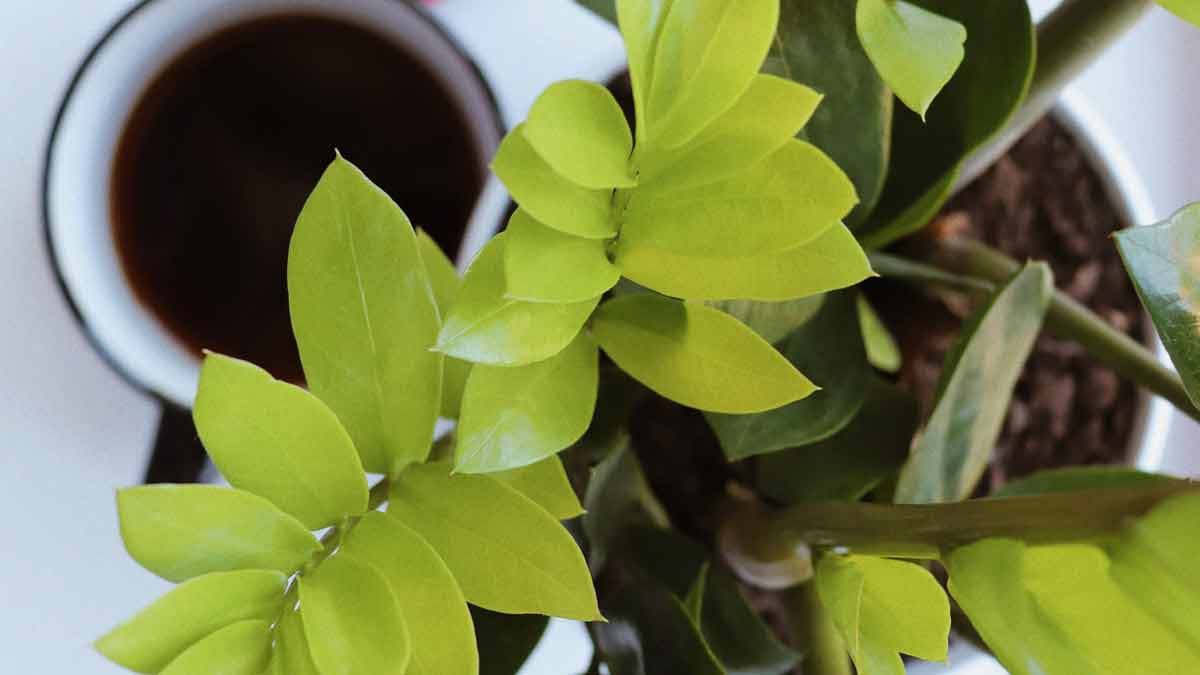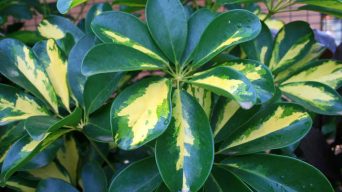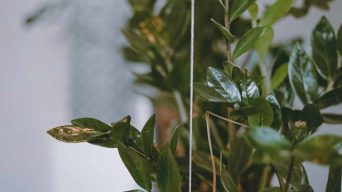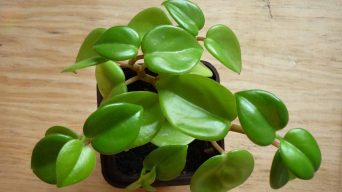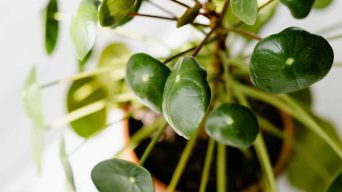Key Takeaways
- ZZ plants do not prefer to be root-bound, as it can negatively affect their overall growth and development.
- Signs of a root-bound ZZ plant include limited or stunted growth, visible roots at the surface, or wilting/yellowing leaves.
- When repotting a ZZ plant, choose a pot slightly larger than its current one and use well-draining soil mixtures to prevent water accumulation around the roots.
- Regular repotting every two years during the growing season can help ensure optimal conditions for your beloved houseplant’s health and longevity.
The ZZ plant, known as Zamioculcas zamiifolia or the Zanzibar Gem, has become increasingly popular among houseplant enthusiasts due to its low maintenance requirements and attractive appearance.
But when it comes to repotting these hardy plants, one question often arises: do ZZ plants like to be root bound?
In this blog post, we’ll delve deep into the topic of root-bound conditions for ZZ plants and discuss their preferences in terms of pot size, signs that your plant may be root-bound, and tips for caring for these unique plants.
Understanding Root Bound Plants And ZZ Plants
When the roots of a plant outgrow its container, it results in root-bound plants that cause limited or stunted growth.
ZZ plants, on the other hand, are popular for their slow growth and ability to tolerate drought.
Definition Of Root Bound And Characteristics Of ZZ Plants
Root-bound is a term used to describe the condition of a plant when its roots have grown so densely that they no longer have enough room within their container.
This leads to the entanglement of roots, making it difficult for them to access essential nutrients and water in the soil.
The ZZ Plant (Zamioculcas zamiifolia), also known as Zanzibar Gem, is a popular houseplant with characteristics worth understanding about root binding.
This resilient evergreen plant originates from Eastern Africa and boasts glossy green leaves on sturdy stems.
It’s well-known for being particularly drought-tolerant due to its underground rhizomes – thickened stems that store water and energy.
For example, consider an owner who has housed their ZZ Plant in a small pot for several years without repotting it.
As time goes on, the expanding rhizomes take up more space within the container while competing with other roots for limited resources like nourishment and oxygen.
Do ZZ Plants Prefer To Be Root-Bound?
ZZ plants do not like to be root-bound, despite their ability to tolerate drought and low light conditions.
Advantages And Disadvantages of Being Root-Bound
Understanding the advantages and disadvantages of being root bound is essential for maintaining the health and well-being of your ZZ plant.
The following table outlines the pros and cons of having root-bound ZZ plants, which can help you make informed decisions about pot size and plant care.
| Advantages | Disadvantages |
|---|---|
| Root-bound plants typically require less frequent watering, as the densely packed roots retain moisture more effectively. | Being root-bound can restrict the overall growth and health of your ZZ plant, leading to stunted growth and reduced foliage production. |
| Some plants, such as ZZ plants, prefer smaller pots, as larger pots may be detrimental to their growth and well-being. | A tightly bound root system can limit the plant’s ability to absorb water and nutrients, which can result in wilting, yellowing leaves, or even plant death. |
| Root-bound plants may be less susceptible to pests and diseases, as their dense root system can help protect the plant from harmful organisms. | Root-bound ZZ plants may eventually become pot-bound, which can cause the pot to crack or break, potentially damaging the plant and its roots. |
While root bound has some advantages, it is generally not recommended for ZZ plants, as it can negatively affect their overall growth and development.
Regular repotting and root pruning can help keep your ZZ plant healthy and vibrant.
ZZ Plant Pot Size And Growth Preferences
When considering the ideal pot size and growth preferences for ZZ plants, it’s essential to strike a balance between providing enough space for root development and avoiding pots that are too large.
ZZ plants tend to thrive in smaller containers, as their roots can comfortably grow without the risk of excess moisture or improper drainage.
Start by selecting a pot with proper drainage holes – this is crucial for maintaining adequate moisture levels without causing standing water in the soil mix.
Typically, it’s best to choose a container only slightly larger than its current one when repotting.
For example, if your ZZ plant is grown in a 6-inch pot, consider upgrading it to an 8-inch container when signs of becoming root-bound appear.
Keep in mind that although these plants are slow growers, they will eventually need more room due to their underground rhizomes’ continuous growth over time.
Signs That Your ZZ Plant Is Root Bound
Is your ZZ plant not growing properly?
Are its roots visible at the surface, or are the leaves yellowing or wilting?
If so, it may be root-bound and need repotting to encourage healthy growth.
Limited Or Stunted Growth
If your ZZ plant is not growing as much as it used to, it may be due to being root bound.
When a plant’s roots become tightly packed in its current pot, it cannot expand and receive the necessary nutrients for growth.
Thus, stunted or limited growth can be one of the signs that your ZZ plant needs to be repotted into a larger container with fresh soil.
Regularly inspect and examine its root system to ensure optimal growth for your ZZ plant.
If you find noticeable roots coming out from the bottom drainage hole or visibly wrapping around the root ball, it’s time for a new home.
Remember: It is better to report sooner rather than later because severe root binding can lead to irreversible damage, such as yellowing leaves or even death of the plant.
Visible Roots At The Surface
If you notice roots protruding from the drainage hole at the bottom of your ZZ plant’s current pot or even on the soil’s surface, it may be a sign that your plant is root-bound.
When roots are visible, they have consumed all available space in their current container and are searching for more room to grow.
Eventually, this can lead to stunted growth and other detrimental health effects on your ZZ plant.
Keep in mind that too much soil compaction around the roots can make it difficult for water and nutrients to reach them effectively.
Over time, such conditions may lead to root rot or other complications that adversely affect the overall well-being and vitality of your ZZ plant.
Wilting Or Yellowing Leaves
Wilting or yellowing leaves are common indicators of issues your ZZ plant may be experiencing. These symptoms can be attributed to both overwatering and root binding. When the roots become constricted due to root binding, they struggle to absorb the necessary water and nutrients, leading to these visible problems.
To address this problem, it’s recommended to repot a root-bound ZZ plant into a larger pot with fresh soil. This gives the roots the space they require to grow correctly and access the necessary nourishment from water and fertilizer.
How To Care For Root-Bound ZZ Plants
To care for root-bound ZZ plants, it’s essential to repot them into a larger container with fresh soil and proper drainage holes, prune the roots as needed, and water regularly.
Techniques And Tips For Repotting
Repotting ZZ plants is an essential part of their care routine.
Here are some techniques and tips to follow for successful repotting:
- Timing: Repot ZZ plants every two years during the growing season, which starts in early summer.
- Choosing a pot: Select a container one size larger than the current one to provide enough space for root growth.
- Soil mixture: Use a well-draining soil mix that includes components like perlite and peat moss to maintain proper drainage.
- Preparation: Water the plant before repotting to help prevent root damage.
- Removing from the old pot: Gently grasp the base of the plant and carefully remove it from its current container without breaking too many of its roots.
- Dealing with roots: Avoid trimming ZZ plant roots as this can cause severe damage – loosen them up by gently spreading them apart.
- Adding fresh soil: Place fresh soil mix at the bottom of the new pot and carefully lower your ZZ plant into it before filling in around the sides with additional mixture.
- Watering: After repotting, water thoroughly, but ensure not to overwater to avoid soggy soil or root rot.
By following these techniques and tips, you can ensure your ZZ plant thrives in its new home with enough room for roots to grow healthy and strong.
Remember to always watch for signs of root-bound stress so you can act sooner rather than later if needed!
Choosing The Right Container And Soil
Choosing the right container and soil is crucial when repotting your ZZ plant.
Selecting a pot one size larger than the previous one is essential to ensure enough space for new growth.
When selecting a container, ensure it has proper drainage holes to prevent water from accumulating at the bottom of the pot, leading to root rot.
Regarding soil, ZZ plants require well-draining potting mixtures like cactus or succulent soil mixes.
These types of soils prevent excess moisture from building up around the roots while allowing oxygen and nutrients to flow through the soil easily.
Choosing the correct container and soil mixture for your ZZ plant can create an optimal environment that promotes healthy growth year-round while avoiding common problems like nutrient deficiencies or overwatering-induced root rot.
Proper Root Pruning
Root pruning is not typically necessary for ZZ plants since they have rhizomes that cannot be divided like other houseplants.
However, if you notice your plant becoming root-bound, trimming the roots can help maintain its health and size.
When repotting a ZZ plant, carefully untangle the roots and remove any excess soil before planting it in a fresh potting mix.
If the roots are visibly overcrowded or damaged, trim them back slightly to encourage new growth and prevent further damage.
Use sharp scissors or gardening shears to avoid crushing or tearing the delicate root system.
Correct Watering And Fertilization
To ensure the health and growth of your ZZ plant, proper watering and fertilization are essential.
The ZZ plant is drought-tolerant, so it’s crucial not to overwater it.
Water your ZZ plant thoroughly when the top inch of soil feels dry, ensuring the excess water drains through the pot’s drainage holes.
As for fertilization, ZZ plants do not require frequent feeding but benefit from being fertilized once a month during their growing season (spring and summer).
Use a balanced fertilizer diluted at half strength to avoid fertilizer burn on leaves.
It’s best not to feed them in the winter months when they enter dormancy mode.
Final Thoughts
ZZ plants do not prefer to be root-bound and can exhibit signs of distress if left in a pot that is too small.
Signs of being root-bound include stunted growth, wilting leaves, or visible roots at the surface.
It’s important to repot ZZ plants every 2 years with fresh soil and a larger container.
This process is unique but rewarding as it promotes healthy growth and prolongs the plant’s life span.
Remember to repot during the ZZ plant’s active growing season in spring or early summer for optimal results.

